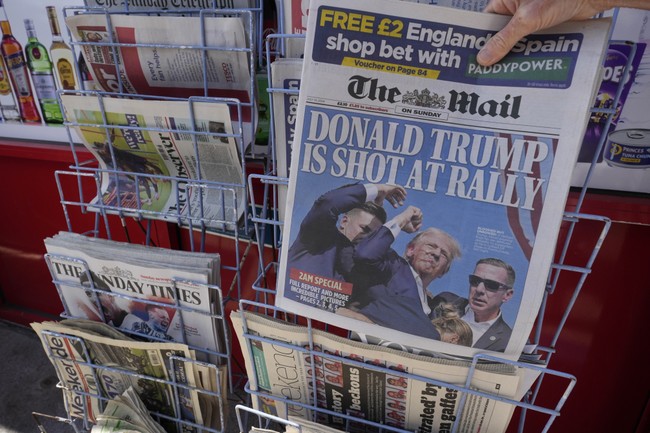
A new transcript of more than seven hours of communications on the day a would-be assassin shot Donald Trump at a Pennsylvania rally last month reveals that communication between the Secret Service and the police was at times nonexistent and led to the failures that almost cost the former president his life. The Washington Post, the outlet that obtained the transcript, reports that even though authorities had the shooter on their radar and knew there was a danger, they lost sight of him for 20 minutes.
The transcript and accounts provide the clearest picture yet of the minute-by-minute hunt for [the shooter] Crooks, and show how he evaded police and climbed onto the roof of a nearby building undetected. Police lost track of Crooks for 20 minutes after he was seen with the range finder, the transcript shows. When he was spotted again, walking toward the area where he would gain access to the rooftop of what local police called the “AGR building,” an officer mischaracterized where he was headed, directing his colleagues to the wrong side of the building.
What’s worse, several factors, including poor cellular service in the Allegheny Valley, led to the Secret Service and local authorities both having virtually no idea what the other side was doing.
The Post examination also shows that communication between the Secret Service and the local police was disjointed and time-consuming, helping to explain why Secret Service agents closest to Trump were taken by surprise when gunfire erupted. On three occasions, a local officer inside the Butler County command post had to relay information about Crooks to the Secret Service hub by cellphone — on a day when cell service was balky and unreliable.
There’s a “Keystone Cops” feeling coming out the more we learn about the stunning breakdowns in security on that fateful day.
Related: Ted Cruz Gets Into Shouting Match With Acting Secret Service Director Over Failure to Protect Trump
Acting Secret Service Director Makes Damning Admissions on What Was Known About Trump Shooter’s Location
Secret Service Didn’t Give Trump Extra Security Because It Didn’t Want to Spend the Money
When every moment mattered, an officer who knew there was an armed suspect roaming around was unable to get that information to the Secret Service in time:
That method [a cellular phone call] was too slow when seconds counted. A local police officer spotted Crooks on a rooftop with a gun and radioed in to the local command center that he was “armed” approximately 30 seconds before the shooting, according to the transcript of the radio communications and Secret Service officials, but that message was not passed on to the Secret Service command post before Crooks started shooting, the agency has acknowledged.
The amount of mistakes made by authorities in this fiasco is quite simply astounding; in fact, if this is the level of protection offered it’s amazing something like this didn’t happen sooner. You’d think a Trump rally would be one of the most secure sites in the world, but the fact that a young man armed with a rifle was essentially allowed to wander around at will despite his presence being known by both law enforcement and audience members boggles the mind.
Secret Service Director Kimberly Cheatle was the first sacrificial lamb and resigned after her disastrous congressional hearing, but it’s going to take much more than that to ensure such a monumental breakdown does not occur again.
The first thing they have to figure out is how to better work with the local police. This seems appropriate:
